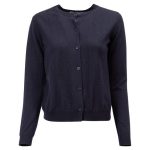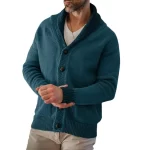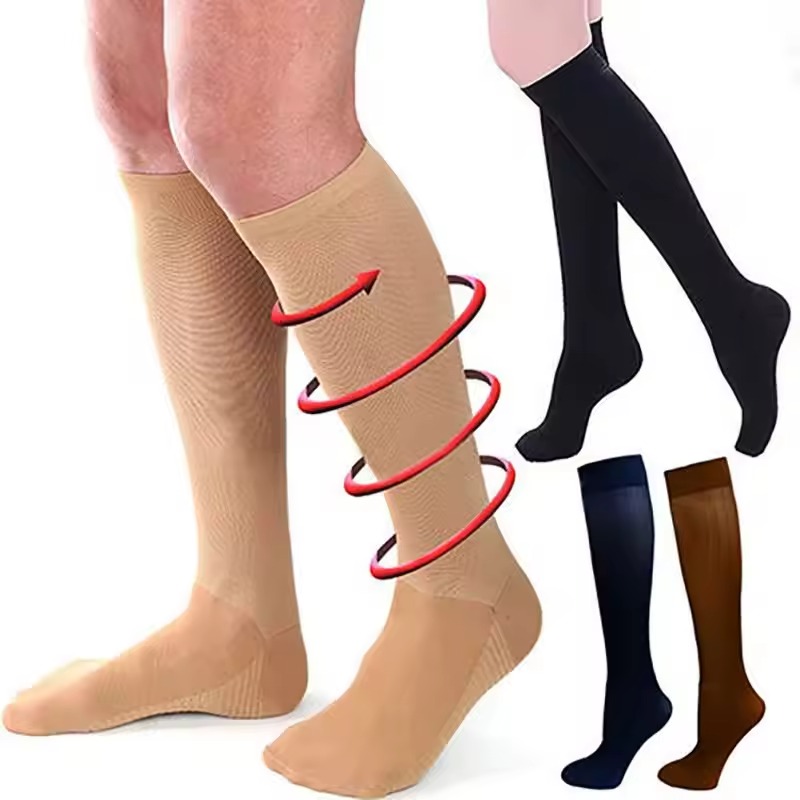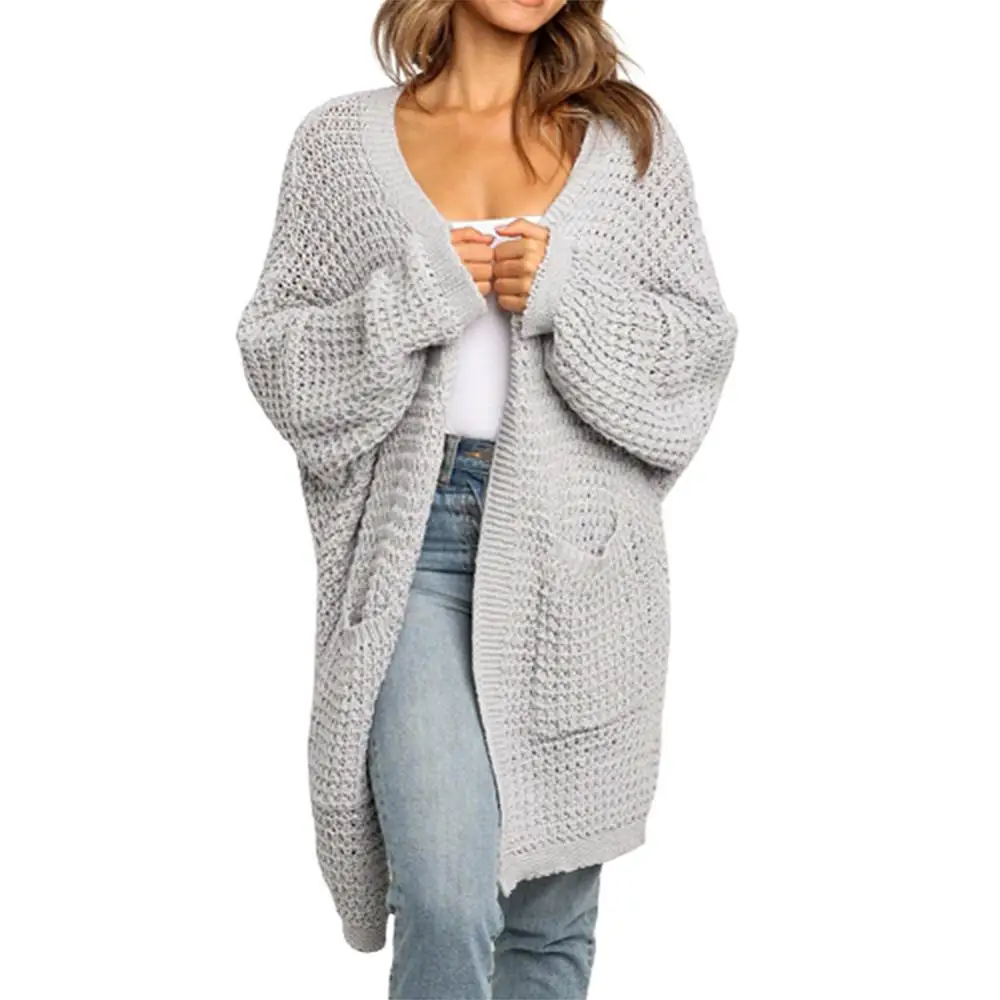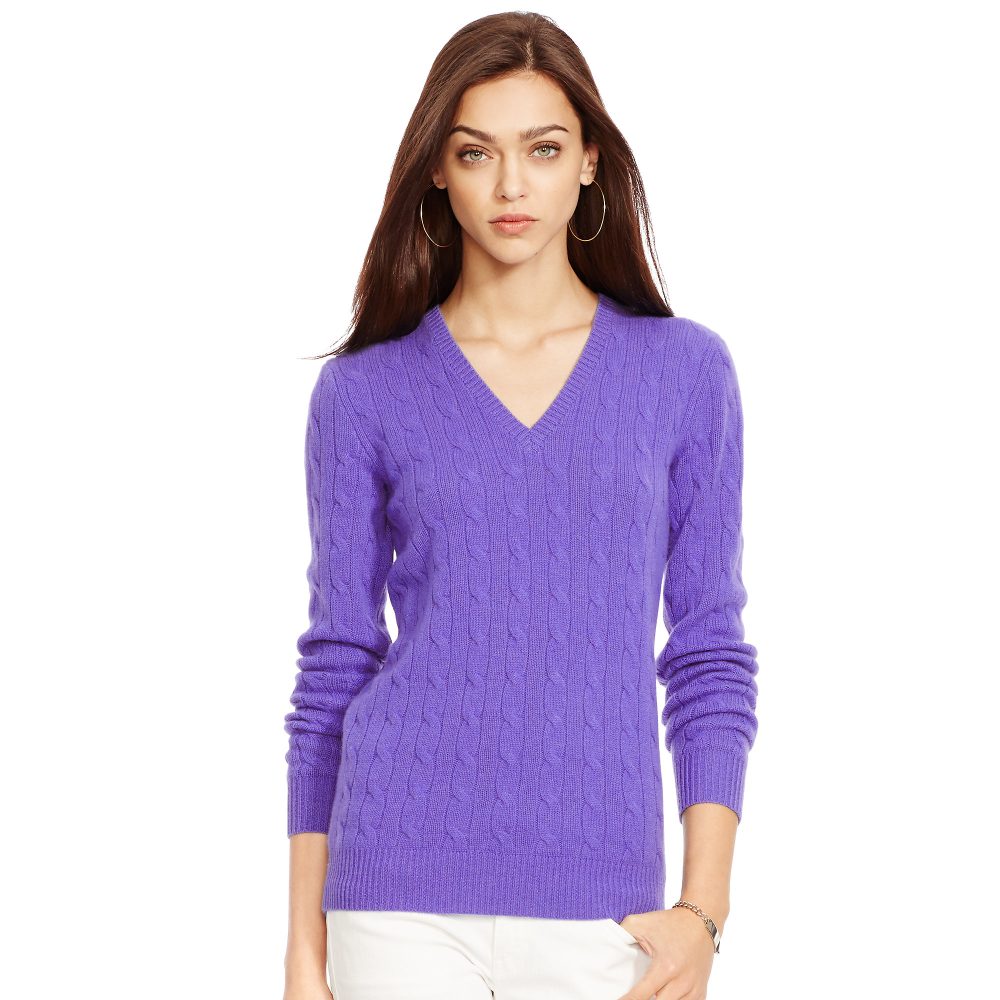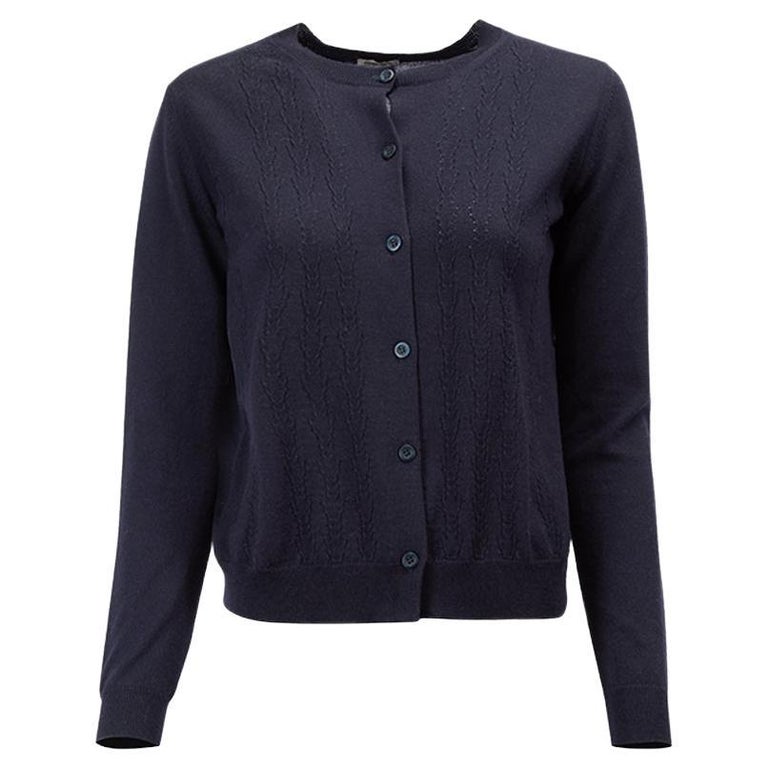What Are Pregnancy Compression Socks?
Pregnancy compression socks are specialized hosiery. They are designed for expectant mothers. They help manage swelling in the feet and ankles. These socks apply gentle pressure to the lower legs. The pressure improves circulation and reduces fluid buildup. Expectant mothers often face discomfort due to swollen feet. Pregnancy compression socks offer a non-invasive solution to this issue.
They vary in style, size, and compression level. It’s important to choose the right type to ensure comfort and effectiveness. These socks are made from elastic and often blend with soft, breathable fabrics. They aim to provide comfort throughout the day. The gentle compression helps prevent varicose veins and deep vein thrombosis.
Pregnancy compression socks differ from regular compression socks. They accommodate the changing bodies of pregnant women. They have features like non-constricting tops and extra stretch. This helps them fit comfortably over swelling legs without causing marks or discomfort.
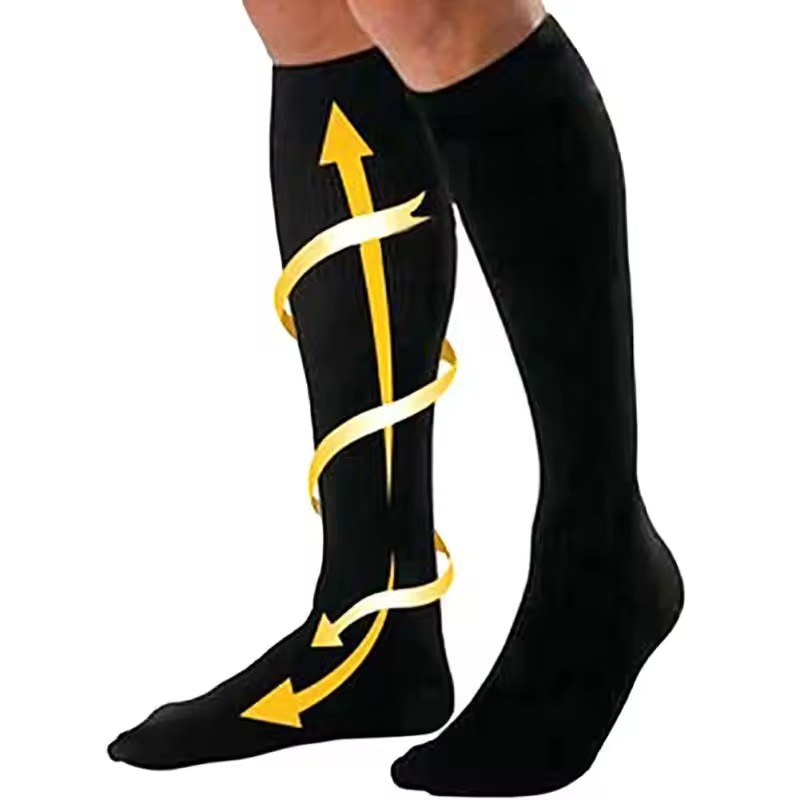
The Causes of Swelling During Pregnancy
Swelling during pregnancy, also known as edema, is common. Many expectant mothers experience it. Hormonal changes in the body trigger this condition. Increased blood flow and fluid retention contribute to swollen feet and ankles. The growing uterus puts pressure on blood vessels. This reduces circulation in the lower body. Gravity then leads fluids to accumulate in the feet and legs.
In the second and third trimesters, swelling is more noticeable. It often worsens with long periods of standing or sitting. Hot weather can also make it worse. Consuming too much caffeine or salt may contribute to fluid retention. Every pregnancy is different, so swelling can vary. Some women experience significant swelling, while others have less.
Staying hydrated and exercising can help manage swelling. Proper rest and elevating the legs are also beneficial. Pregnancy compression socks can provide additional support to alleviate discomfort.
Benefits of Compression Socks for Pregnant Women
Pregnancy compression socks hold several benefits for expectant mothers. Beyond reducing swelling in the feet and ankles, they support overall leg health. Here are key advantages of wearing these socks during pregnancy:
- Improved Circulation: The socks promote blood flow. This eases the load on circulatory systems burdened by pregnancy. Better circulation means less swelling and fatigue.
- Reduced Risk of Venous Issues: They help prevent varicose veins and deep vein thrombosis. These conditions are more common during pregnancy. Compression socks reduce their likelihood.
- Comfort for Daily Activities: They provide comfort for women on their feet. Those with office jobs or who need to stand often can find relief.
- Decreased Discomfort: The socks alleviate pain from swollen feet. This makes daily tasks more bearable.
- Versatile Wear: They fit with many outfits. Expectant mothers can wear them at home, work, or while exercising.
- Eases Restless Legs: Some women experience restless legs syndrome during pregnancy. Compression socks can ease these symptoms.
Pregnancy compression socks offer a simple yet effective way to tackle swelling. They work well with other remedies like rest and hydration. They help mothers-to-be stay active and comfortable. Remember to choose the right type for the best outcomes. Speak with a healthcare provider for personal recommendations.

How Do Compression Socks Work for Swelling?
Pregnancy compression socks aid in reducing swelling by applying graduated pressure. This pressure is highest at the ankles and gradually decreases up the leg. This design encourages the upward flow of blood. It reduces the pooling of fluids in the lower extremities. It’s a simple yet effective way to boost circulation.
The gentle compression exerted by these socks supports the veins. It helps to move blood efficiently back to the heart. During pregnancy, blood volume increases. The heart works harder to pump it through the body. Compression socks ease this process. They lessen the burden on the circulatory system.
By improving blood flow, the socks help to minimize fluid retention. They can prevent the worsening of swelling throughout the day. This is crucial for expectant mothers who spend long periods on their feet. Wearing compression socks can provide immediate relief. It makes walking and standing more comfortable.
Moreover, the compression also reduces the diameter of major veins. It increases the velocity and volume of blood flow. This effect also discourages the formation of blood clots. These could lead to more serious complications like deep vein thrombosis.
In summary, pregnancy compression socks work by mechanically promoting circulation. They effectively reduce swelling and improve leg health for pregnant women. Always choose socks with the correct level of compression. This ensures maximum benefit and comfort.
Choosing the Right Compression Socks During Pregnancy
When expecting, the right pair of pregnancy compression socks can make all the difference. Here’s what to consider:
- Compression Level: They come in various compression levels. Mild compression is often enough for daily wear. For severe swelling or varicose veins, stronger compression may help more.
- Size and Fit: Proper fit is crucial. Measure your legs to find the right size. Socks too tight or too loose won’t help.
- Material: Look for breathable, soft fabrics. They should keep away moisture for comfort.
- Length: Socks come in different lengths. Knee-high socks are common. They cover the area that often swells.
- Toe Style: Some have open toes, others closed. Choose what feels best for you.
- Safety: Talk to a doctor before using them. Especially if you have vascular or diabetic issues.
- Adjustability: Consider socks with adjustable features. As your body changes, they can adapt.
- Ease of Use: You want socks you can put on and take off easily.
Choose wisely and pregnancy compression socks will offer the support you need during this time. They should not cause discomfort or dig into your skin. If you’re unsure about what to pick, seeking advice from a healthcare professional is smart.
How to Wear Compression Socks Safely in Pregnancy
Wearing pregnancy compression socks safely ensures maximum benefits. Here are steps to follow:
- Seek Medical Advice: Before wearing compression socks, consult with a healthcare provider. This is important for those with pre-existing conditions.
- Choose the Right Time: Put on socks first thing in the morning. This is when swelling is minimal. It helps the socks work better throughout the day.
- Ensure Correct Fit: Roll the socks onto your feet without stretching them too much. They should feel snug but not too tight.
- Roll, Don’t Pull: To minimize overstretching, roll the socks up your legs. Avoid pulling from the top edge.
- Smooth Out Wrinkles: Once on, smooth any wrinkles or folds. This prevents uneven pressure that can cause discomfort or skin issues.
- Monitor Your Skin: Check your skin regularly for signs of irritation or pressure marks. If you notice any, consult your doctor immediately.
- Remove at Night: Take off your compression socks at bedtime. Unless your doctor says otherwise, giving your legs a break at night is beneficial.
Following these guidelines helps pregnant women to use compression socks safely and effectively. It can alleviate swelling and add comfort to daily activities.
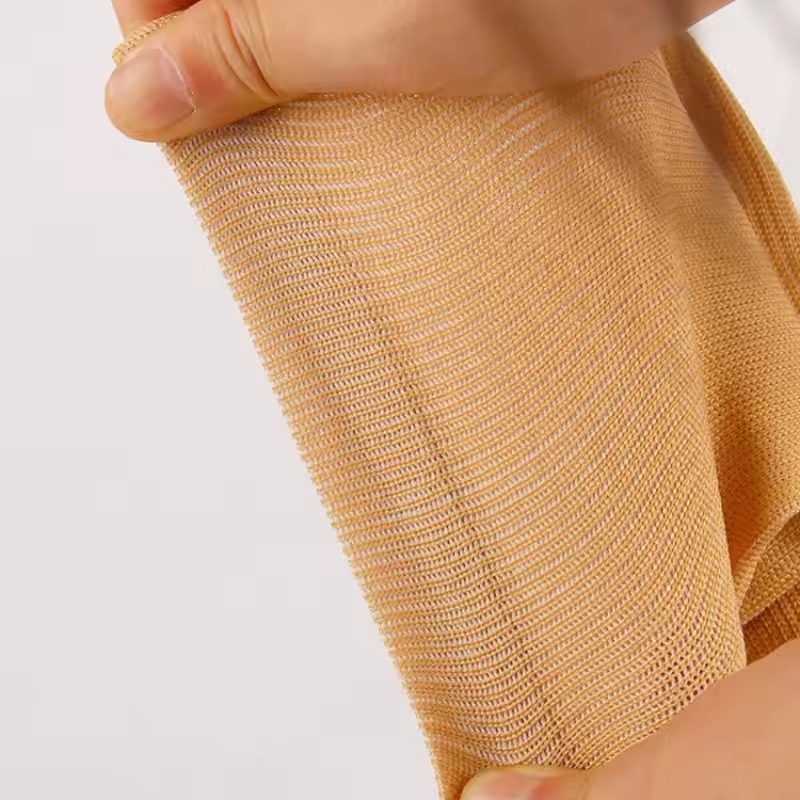
Tips for Managing Swollen Feet Beyond Compression Socks
While pregnancy compression socks are a great tool for managing swelling, they’re just one piece of the puzzle. There are several other effective strategies that can help you minimize discomfort and maintain healthy circulation during pregnancy. Here are some actionable tips to take alongside wearing your socks:
- Stay Hydrated: Drink plenty of water to flush out excess fluids and reduce swelling.
- Elevate Your Feet: When sitting, prop your feet up to encourage fluid movement away from your feet and ankles.
- Keep Moving: Regular, gentle exercise like walking or swimming can boost circulation and decrease edema.
- Rest Often: Take breaks throughout the day to rest and elevate your legs.
- Limit Salt Intake: Cut back on salty foods to prevent water retention.
- Wear Comfortable Shoes: Choose shoes with good support that do not constrict your feet.
- Avoid Long Periods of Sitting or Standing: Shift positions regularly if you must stand or sit for extended times.
- Stay Cool: Heat can worsen swelling, so try to keep your body temperature down on hot days.
- Massage Your Feet: Gentle massage can help move fluids and increase comfort.
These tips, along with wearing the correct pregnancy compression socks, can help manage swollen feet during pregnancy. Always consult with your healthcare provider before trying new remedies or making changes to your routine.
Frequently Asked Questions About Pregnancy Compression Socks
When it comes to managing swollen feet during pregnancy, many women turn to pregnancy compression socks. As a result, numerous questions arise regarding their use, benefits, and safety. To address some of these common concerns, we have compiled a list of frequently asked questions about pregnancy compression socks.
Are Pregnancy Compression Socks Safe to Use?
Yes, they are generally safe when used correctly. Always consult a doctor first, especially if you have existing health concerns.
How Long Can Pregnancy Compression Socks Be Worn Each Day?
They should be put on in the morning and can be worn throughout the day. Remove them at night, unless advised differently by a healthcare provider.
Will Compression Socks Cause Discomfort or Marks?
If properly fitted, they should not cause discomfort or leave marks. Ensure they fit snugly without being too tight.
Can I Wear Pregnancy Compression Socks While Sleeping?
It’s best to remove them before bed. Only wear them at night if your doctor recommends it.
How Do I Choose the Correct Size?
Measure your legs and refer to the sizing chart provided by the manufacturer. Correct size ensures maximum effectiveness and comfort.
Are There Any Side Effects to Wearing Compression Socks?
Rarely, some may experience skin irritation or discomfort. If this occurs, consult your healthcare provider.
Can I Still Exercise While Wearing Compression Socks?
Yes, compression socks are great for exercise. They can help with circulation when you are active.
How Do I Wash Pregnancy Compression Socks?
Follow the care instructions on the label. Usually, they should be washed gently and air-dried.
Are Pregnancy Compression Socks the Only Solution for Swelling?
No, they are one method. Combine them with other strategies, like elevating your feet and staying hydrated, for the best results.
By providing answers to these FAQs, expectant mothers can feel more informed and confident in using pregnancy compression socks to manage swelling during pregnancy. Remember to listen to your body and consult a healthcare professional with concerns or questions.



